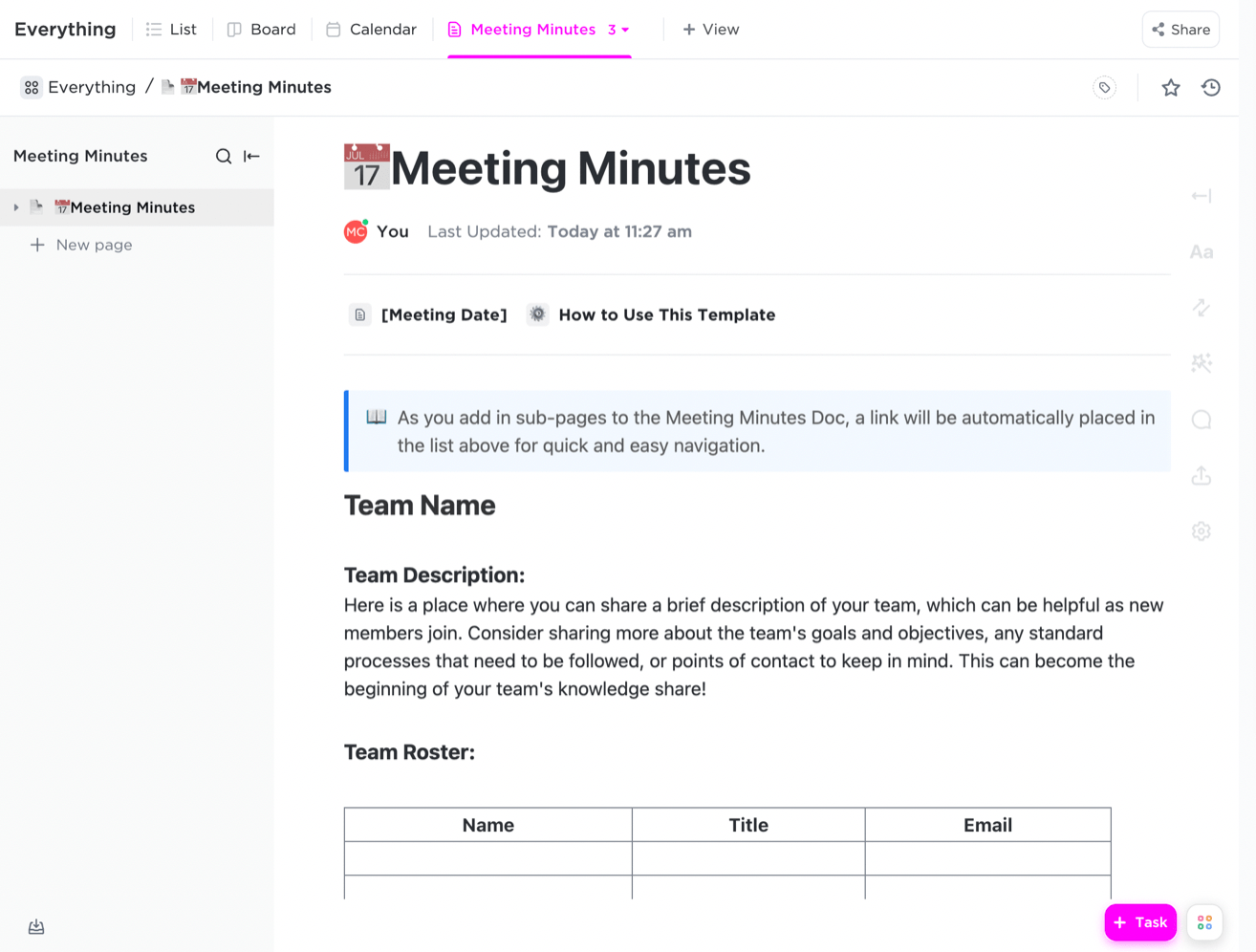Meeting notes are essential for documenting the key aspects of a meeting, ensuring that every important discussion and decision is accurately captured and easily accessible for future reference. The following strategies can help you achieve this goal effectively.
Choosing the Right Tools and Materials
- Select Appropriate Note-Taking Tools: Opt for digital tools like laptops or tablets, which offer ease of editing and sharing. Alternatively, traditional pen and paper can be effective for those who prefer handwritten notes.
- Prepare a Template in Advance: Design a template that includes sections for the meeting's date, attendees, agenda items, key decisions, action items, and a space for additional notes. This structured approach ensures you don't miss any critical details.
During the Meeting
- Assign a Dedicated Note-Taker: Appoint someone specifically to take notes. This person should have a clear understanding of the meeting's purpose and be attentive to the discussions.
- Record Key Points and Decisions: Focus on capturing the essence of discussions, important decisions made, and any action items or responsibilities assigned. Avoid transcribing every word; instead, summarize the main points.
- Clarify Ambiguities: If a point is unclear, ask for clarification during the meeting. This ensures the accuracy of the notes and prevents future misunderstandings.
- Use Symbols and Abbreviations: Develop a system of symbols and abbreviations for common terms or phrases to speed up the note-taking process.

After the Meeting
- Review and Edit Notes Promptly: Revise the meeting notes while the discussion is still fresh in your mind. This helps in capturing all details accurately.
- Distribute the Notes Efficiently: Share the meeting notes with all participants and relevant stakeholders soon after the meeting. Ensure the format is accessible and easy to read.
- Archive Notes for Future Reference: Store the notes in an organized manner, preferably in a digital format, for easy retrieval and reference in the future.
Addressing Common Challenges
- Handling Technical Discussions: For meetings involving technical discussions about power, costs, efficiency, budget, prices, dimensions, specifications, lifespan, age, value, time, advantages, materials, quality, speed, and drawbacks, it is crucial to note specific numbers and details. For instance, if a new project's budget is discussed, record the exact figure, like "$50,000 for initial development costs."
- Dealing with Sensitive Topics: When sensitive issues arise, document the general gist of the discussion without delving into personal details. Focus on the decisions made and the next steps.
- Capturing Participant Contributions: Note the key contributions of each participant, especially when they propose ideas or solutions. This acknowledgment can encourage further participation and idea sharing.
For more detailed guidance on taking effective meeting notes, you can refer to this resource.
